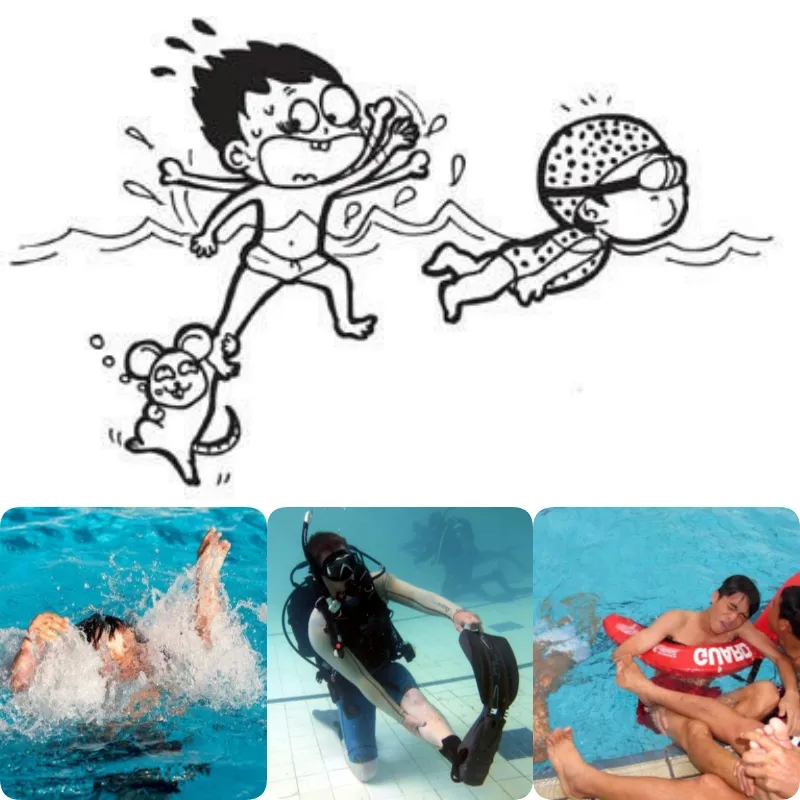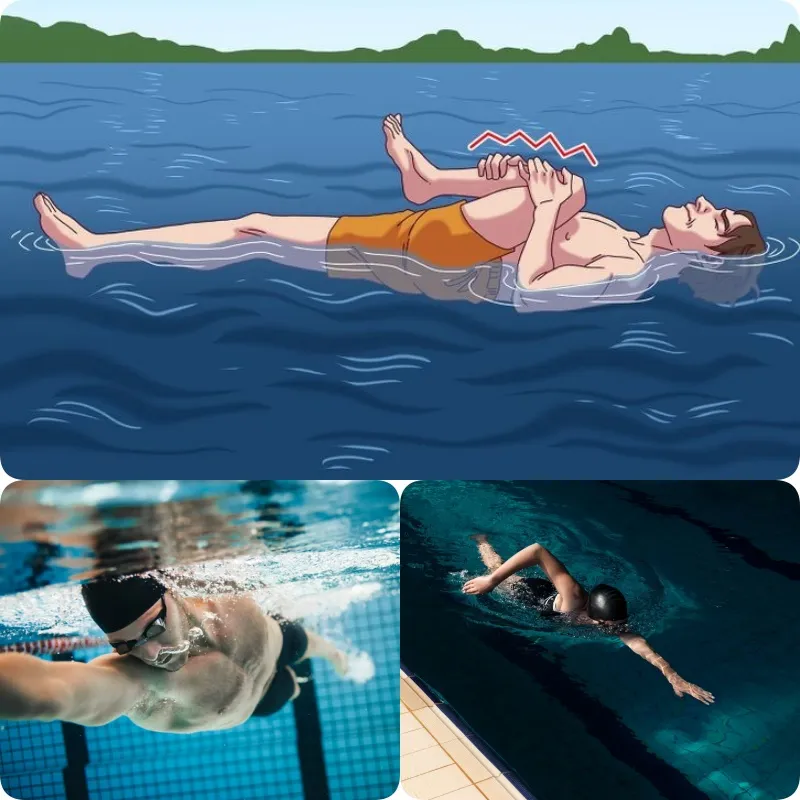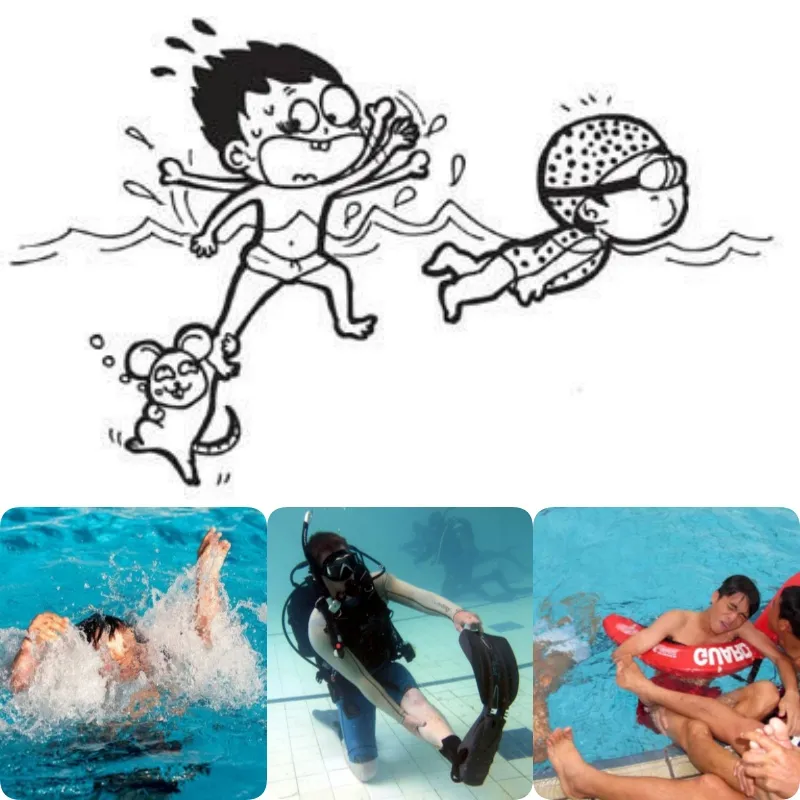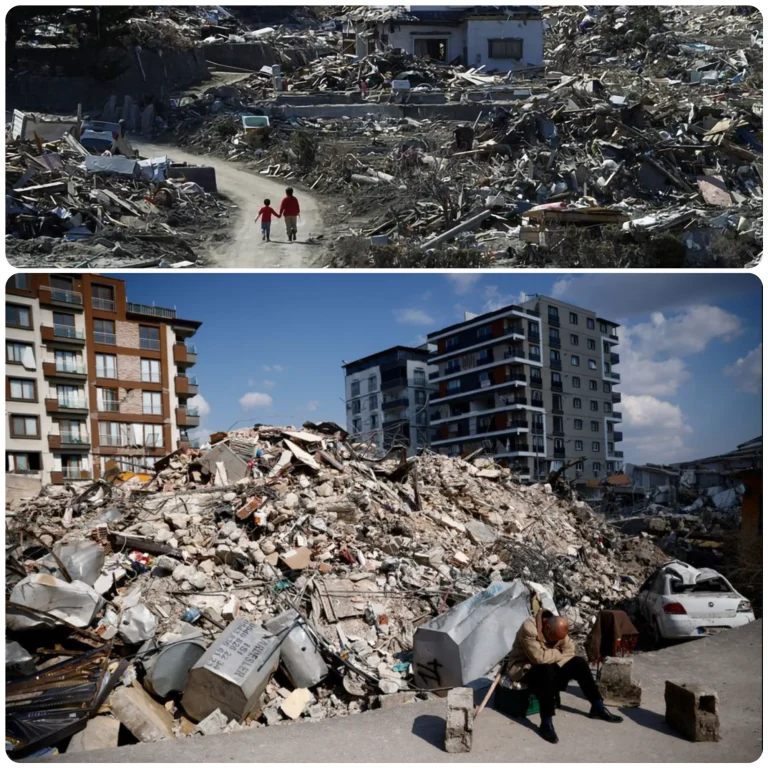Don’t Underestimate Cramps While Swimming: Best Practices for Handling Them

Don’t Underestimate Cramps While Swimming: Best Practices for Handling Them
Cramps while swimming can affect anyone, regardless of their experience level. Even seasoned swimmers may encounter this issue. So, what exactly are cramps while swimming, what causes them, and how should you handle them to ensure safety? Let’s explore these questions in this article.
Table of Contents
ToggleUnderstanding Cramps

Cramps are an unpleasant experience because they not only interrupt your activity but also cause severe pain. Cramps can occur at any age, from children to the elderly, and are particularly common during strenuous physical activities like running, sexual activity, or swimming.
What Are Swimming Cramps? Are They Dangerous?
Swimming cramps refer to the sudden contraction of muscles, causing intense pain while you are swimming. These cramps can occur in any muscle group, but are most commonly felt in the knees, ankles, hips, thighs, hands, feet, and abdominal muscles. Although cramps during swimming can be painful, they should not be taken lightly as they can indicate a serious health issue. Cramps while swimming can also lead to drowning and can be very dangerous. Therefore, even if you are an experienced swimmer, it is important to be cautious about cramps.
Causes and Affected Groups
Cramps while swimming can affect anyone, regardless of age or experience. Professional swimmers and long-time swimmers are not exempt from cramps. However, the risk of cramps is higher for beginners or those not yet accustomed to the water environment. Individuals who frequently engage in sports or older adults are also more prone to cramps.

Three main causes of cramps while swimming include:
- Inadequate Warm-Up: Not warming up properly or warming up insufficiently before swimming can increase the risk of cramps. Proper preparation helps to keep muscles flexible and reduce the risk of injury.
- Excessive Effort: If you swim with too much effort without resting when your body signals fatigue, you may experience cramps. Listen to your body and take breaks as needed.
- Nutritional Deficiencies: A lack of calcium and other essential nutrients can make muscles more susceptible to cramps. Ensure a balanced diet to maintain muscle health.
Experts recommend that proper warm-up and adequate nutrition can reduce the risk of cramps by up to 50%. Additionally, avoid swimming when you are stressed, exhausted, or lacking sleep.
On-the-Spot Remedies for Cramps
If you experience cramps while swimming, the first step is to stay calm and avoid panic. If there are people around, signal for help. To manage cramps underwater, try to relax your body, float on your back, and keep your arms bent at a 90-degree angle with your fingers pointing up. Bend your knees slightly so part of your body is submerged, but your face and nose remain above water, giving you time to wait for assistance.
If you are alone and cannot get help, do not thrash around as it will deplete your energy quickly. Instead, try to stay calm and float. If the cramp is in your hand, tightly clench your fist, then spread your fingers repeatedly. If the cramp is in your thigh or toe, use your opposite hand to pull the affected leg towards your body and use the other hand to press on the knee to straighten the leg.
Preventing Cramps While Swimming

To prevent cramps while swimming, follow these guidelines:
- Warm-Up Thoroughly: Perform a thorough warm-up before swimming, especially in cold weather or low-temperature water.
- Stay Hydrated: Drink plenty of water to avoid dehydration, especially during hot summer days when you sweat a lot.
- Exercise Regularly: Engage in warm-up exercises for your muscles and joints, ensuring you do not skip warming up your neck, knees, hips, and toes.
- Avoid Deep Water: If you are a beginner, avoid swimming in deep water until you gain more skills and experience.
- Avoid Fins for Beginners: Fins can put extra pressure on your toes and increase the risk of cramps, so avoid using them if you are not yet proficient.
- Coordinate Your Movements: Swim with smooth and coordinated movements to avoid straining your muscles.
- Listen to Your Body: If you feel fatigued, reduce your pace and return to shore to rest.
- Avoid Swimming on an Empty or Full Stomach: Do not swim when you are extremely hungry or overly full, as this can cause cramps due to inadequate oxygen supply to the muscles.
- Health Check: Individuals with heart conditions, diabetes, or older adults should have a comprehensive health check before swimming.
- Rest After Swimming: After swimming, rest for about 15 minutes, take a warm shower, and perform stretching exercises. Cramps while swimming are a common occurrence that can happen to anyone, including experienced swimmers.
Cramps not only cause pain but can also lead to drowning. Therefore, do not underestimate the situation; equip yourself with the necessary knowledge to prevent and handle cramps effectively.






